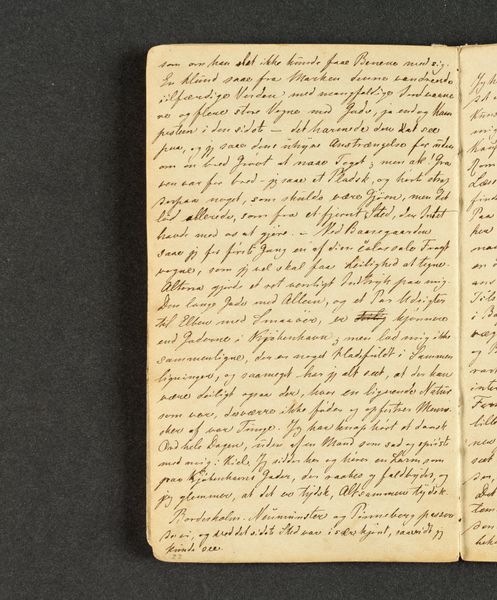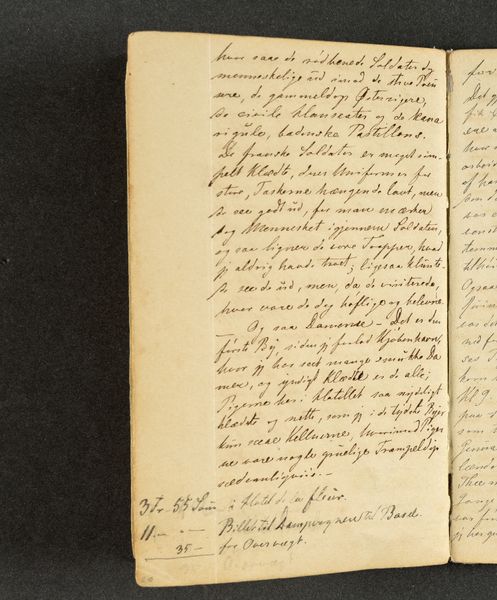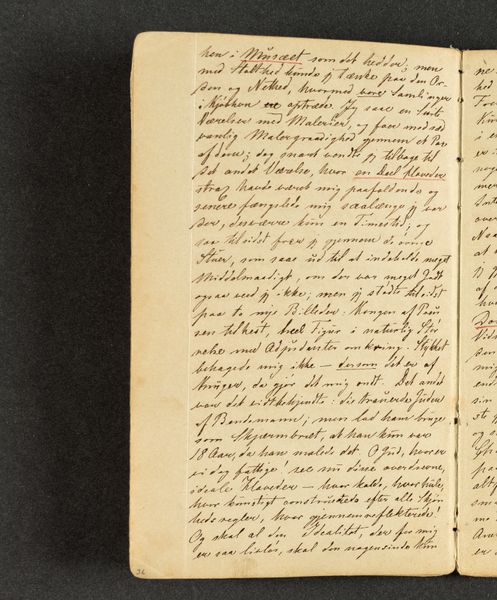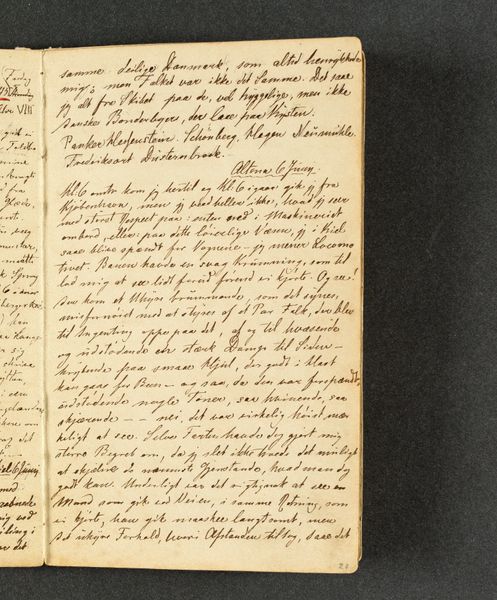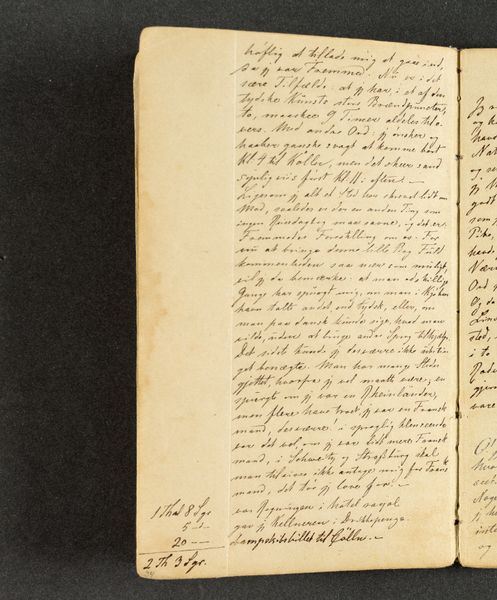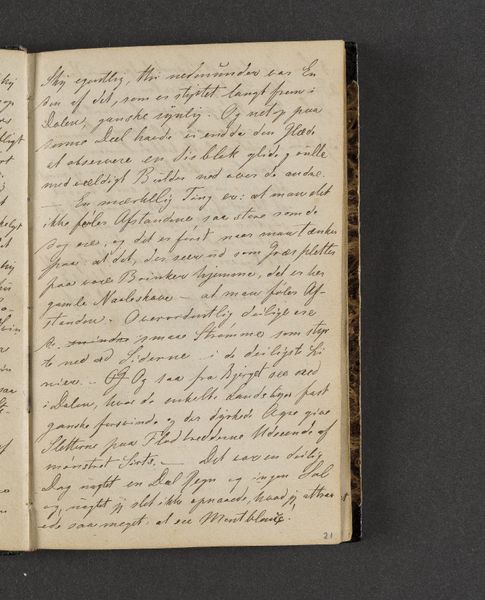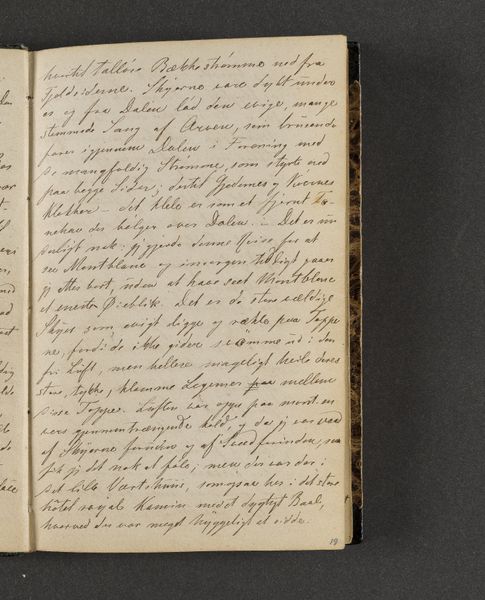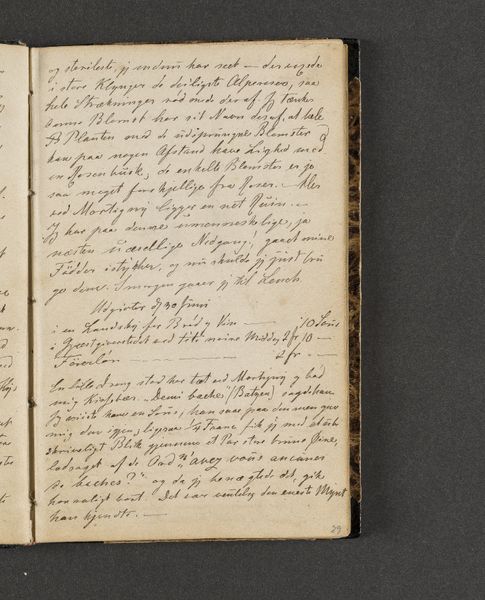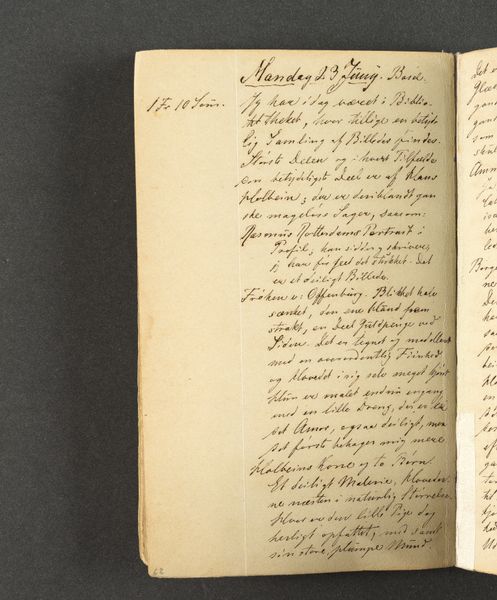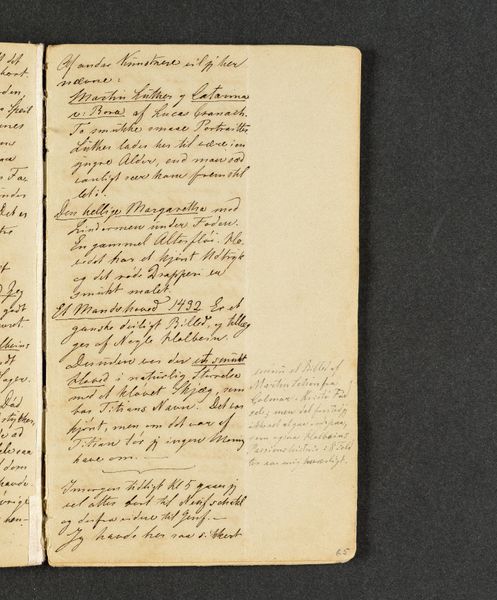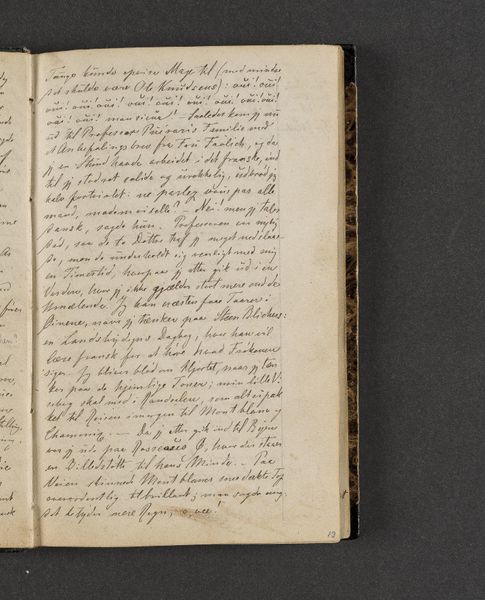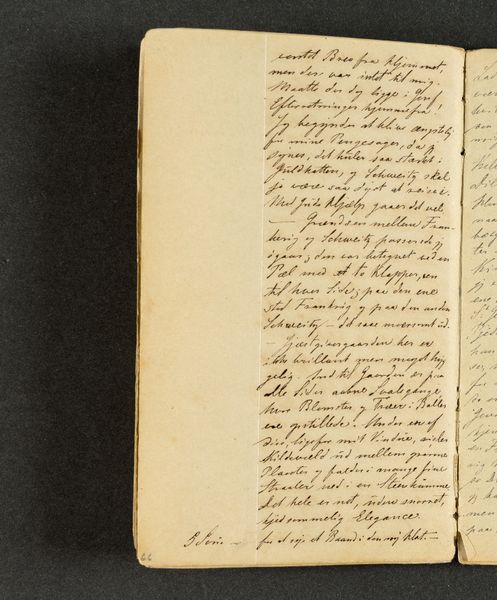
drawing, paper, ink
#
drawing
#
narrative-art
#
paper
#
ink
#
romanticism
Dimensions: 163 mm (height) x 98 mm (width) x 8 mm (depth) (monteringsmaal)
Curator: So, we're looking at a work by Johan Thomas Lundbye entitled "Rejsedagbog" which translates to "Travel Diary". It's dated 1845 and held at the SMK – Statens Museum for Kunst. This drawing is rendered in ink on paper. What springs to mind for you? Editor: My first thought is intimacy. The cramped handwriting, the close-up view – it feels like we're intruding on something deeply personal, a private conversation. It’s visually dense. It feels like a wall of language. Curator: I think that's right; it certainly exudes Romanticism. It's more than just a simple travel log. Lundbye uses this diary entry to explore not only the places he visits, but also his internal landscape, layering narrative with emotion and experience. It speaks to the Romantic era’s emphasis on personal experience and subjective perception. Editor: Absolutely. We must situate this in its time; diaries were more than mundane recordings. They served as spaces where inner life and observations of the external world intertwined. Lundbye engages here with constructing identity and negotiating space in the burgeoning era of travel. It becomes about claiming experience in ink. What's not being said is as powerful as what is. I wonder about the act of inscription in a colonial context. Who gets to write? Who gets to journey? Curator: Fascinating point. What I appreciate is his unpretentious approach. It feels authentic and unfiltered. There's an energy that invites us to fill the gaps ourselves. Editor: Precisely. What’s intriguing is to examine who is considered a traveler and the means of transport available during this period. By framing Lundbye’s text through the lens of historical and material conditions, we not only deepen our knowledge about him, but open our understanding of that time. Curator: Ultimately, "Rejsedagbog" captures that perfect intersection between observation and emotion. It reminds us how travel—both physical and mental—shapes who we are. Editor: Right. It encourages me to question narratives of exploration and identity that often exclude certain bodies and voices. In whose journal do these unwritten journeys find their expression? It asks more of me, too. I like that.
Comments
No comments
Be the first to comment and join the conversation on the ultimate creative platform.
